
Continuing my adventures on Wainwright’s Coast to Coast walk, this week I look at the two days spent walking from Keld to the village of Reeth and on to the market town of Richmond.
The route from Keld to Reeth is approximately 11 miles long, although there is the option to take a brief diversion which will add an extra couple of miles. After a good night’s sleep and a full English breakfast, and with my packed lunch in tow, I set off from the Keld Lodge. It wouldn’t be a week in England without some rain. While the previous day’s walk from Kirkby Stephen to Keld had only had a few showers, today the rain arrived with a vengeance. It came down in bucketloads as I walked through the village and across the bridge.
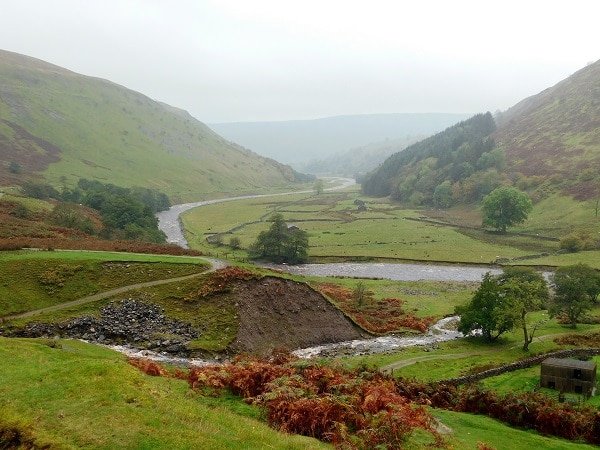
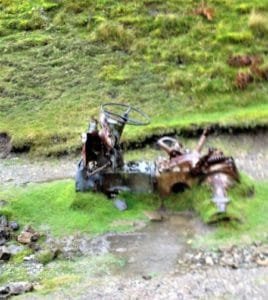
Shortly after, I came across a direction in the guidebook that seemed a little unexpected: “bear left at tractor remains”. How on earth could they know that the tractor hadn’t moved? Sure enough, there were some tractor remains, so old and rusted that moss had grown up around them. Moral: trust your guidebook.
Despite the weather, the walk was a pleasant one, past grazing sheep and following the course of the River Swale. If you want, you can cross the river and take a detour to Muker or you can continue to Gunnerside.
Trusting the guidebook was the first lesson of the day. The second was learned in Gunnerside – check your equipment. Stopping for a cup of hot chocolate at the Mary Shaw Cafe, I learned that my beloved (i.e. old) waterproof was, in fact, anything but. The rain had soaked through every layer I was wearing and the rain showed no sign of letting up. I was only half way through my walk for the day.
I stayed at the Mary Shaw for more than two hours, chatting with the owner. No one else was walking on such a wet and miserable day. We talked about the history of the village and how modern villages are struggling to keep basic services – school, shops, and so on – viable. Then it was time to catch a bus into Richmond to buy a new waterproof, before returning to Reeth, my stop for the evening.
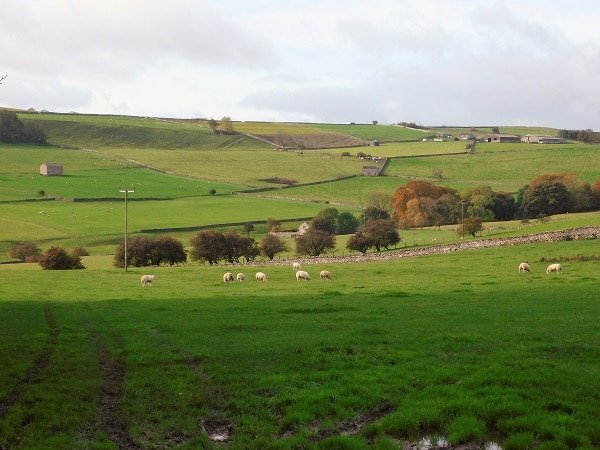
On To Richmond
By the next morning, the skies had cleared and my clothes had all dried. I set off feeling bright and breezy, with just ten miles ahead of me before I reached Richmond. The route took me through the villages of Grinton, Marrick, and Marske, through beautiful grazing lands, along Applegarth Scar and into the historic market town. As you pass through Marske, you might want to stop at the Church of St. Edmund the Martyr, parts of which were constructed in 1090. The church also has a snack box of treats for the weary walker.
A Word About Gates and Wildlife
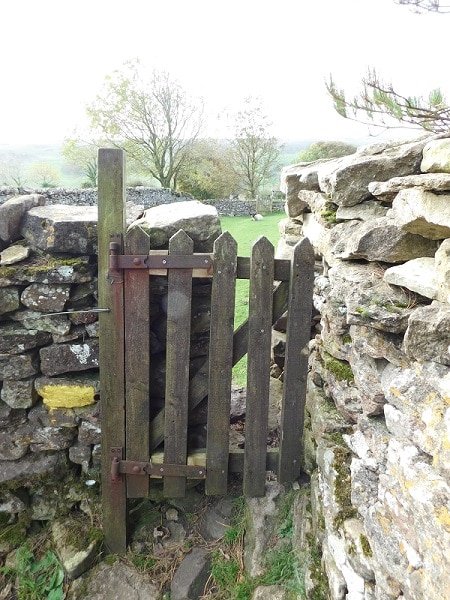 As you walk the Coast to Coast, you will encounter a good many gates. And there are many signs reminding you to close the gates to prevent animals from escaping. Please respect these signs. You are crossing many farms and owe it to the farmers to respect their property. Many gates are little wooden swings set into the drystone walls. But I couldn’t help notice that they seemed to be shrinking. As the gates narrowed, I reached one several where there was barely room to squeeze through. And then of course there was the field between Marske and Applegarth Scar which had a series of three gates. The guidebook reminds you to close each one after going through but was it really necessary to open them in the first place?
As you walk the Coast to Coast, you will encounter a good many gates. And there are many signs reminding you to close the gates to prevent animals from escaping. Please respect these signs. You are crossing many farms and owe it to the farmers to respect their property. Many gates are little wooden swings set into the drystone walls. But I couldn’t help notice that they seemed to be shrinking. As the gates narrowed, I reached one several where there was barely room to squeeze through. And then of course there was the field between Marske and Applegarth Scar which had a series of three gates. The guidebook reminds you to close each one after going through but was it really necessary to open them in the first place?

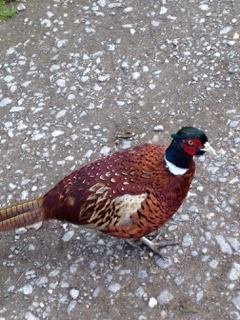 The other thing that stood out is that it was the day I was attacked by a pheasant. I took care to mind the sheep and cattle. Who would expect that a pheasant could be dangerous? Clearly my path took me through the territory of one who was feeling rather protective. He followed me for about ten minutes, launching himself at my ankles and drawing blood. Another lesson learned: pheasants can be mean when they want to be.
The other thing that stood out is that it was the day I was attacked by a pheasant. I took care to mind the sheep and cattle. Who would expect that a pheasant could be dangerous? Clearly my path took me through the territory of one who was feeling rather protective. He followed me for about ten minutes, launching himself at my ankles and drawing blood. Another lesson learned: pheasants can be mean when they want to be.
Richmond
After spending so many days crossing quiet moors and wandering along peaceful streams, Richmond might come as a bit of a shock. The town of 8,400 people stands at the edge of the Yorkshire Dales National Park and is a divider for the route. From here, you proceed to the North York Moors.
The walk from Reeth is short enough that you can arrive in Richmond by lunchtime, allowing plenty of time to explore. Some walkers choose to spend an extra day here before continuing their journey.
Richmond Castle, the 11th century fortress built by Alan the Red, stands near the town centre. Much of the castle is in ruins now but it is still worth a visit. Of particular interest is the exhibit about the Richmond 16 – conscientious objectors imprisoned here during World War I.
Where to Stay – Reeth

Hackney House Bed & Breakfast is a charming Victorian house on the road leading out of Reeth. I was the only guest when I stayed in October, but I received a warm welcome, lots of cups of tea, and delicious breakfast before setting out the next morning.
Where to Stay – Richmond

After days of walking through muddy fields, the Rosedale Guest House felt like quite the luxury. Don’t get me wrong – my other accommodations were all wonderful. But this Georgian-themed room was glamorous on a level that my hiking boots and dirty socks seemed rather out of place. It was wonderful! Ericka’s Suite was tastefully decorated in silver and grey, with chocolates and sherry, a cuddly toy, and glittering toilet seat. Special thanks to the owners for taking care of my walking boots, ensuring they were nice and warm when I set out next morning.
Diary Excerpt
I kept a detailed diary of my walks and dictated thoughts and ideas along my way. Below are a few excerpts from this segment:
“I really hadn’t studied the maps in great detail before this trip. I knew that I would be walking across the North York Moors, but I am thrilled to be seeing so much of the Yorkshire Dales. It is absolutely gorgeous.”
“I hear the church bells ringing in the nearby village. Seeing these little communities, you appreciate certain traditions. The village church has a sense of reverence and history, even to the non-religious.”



